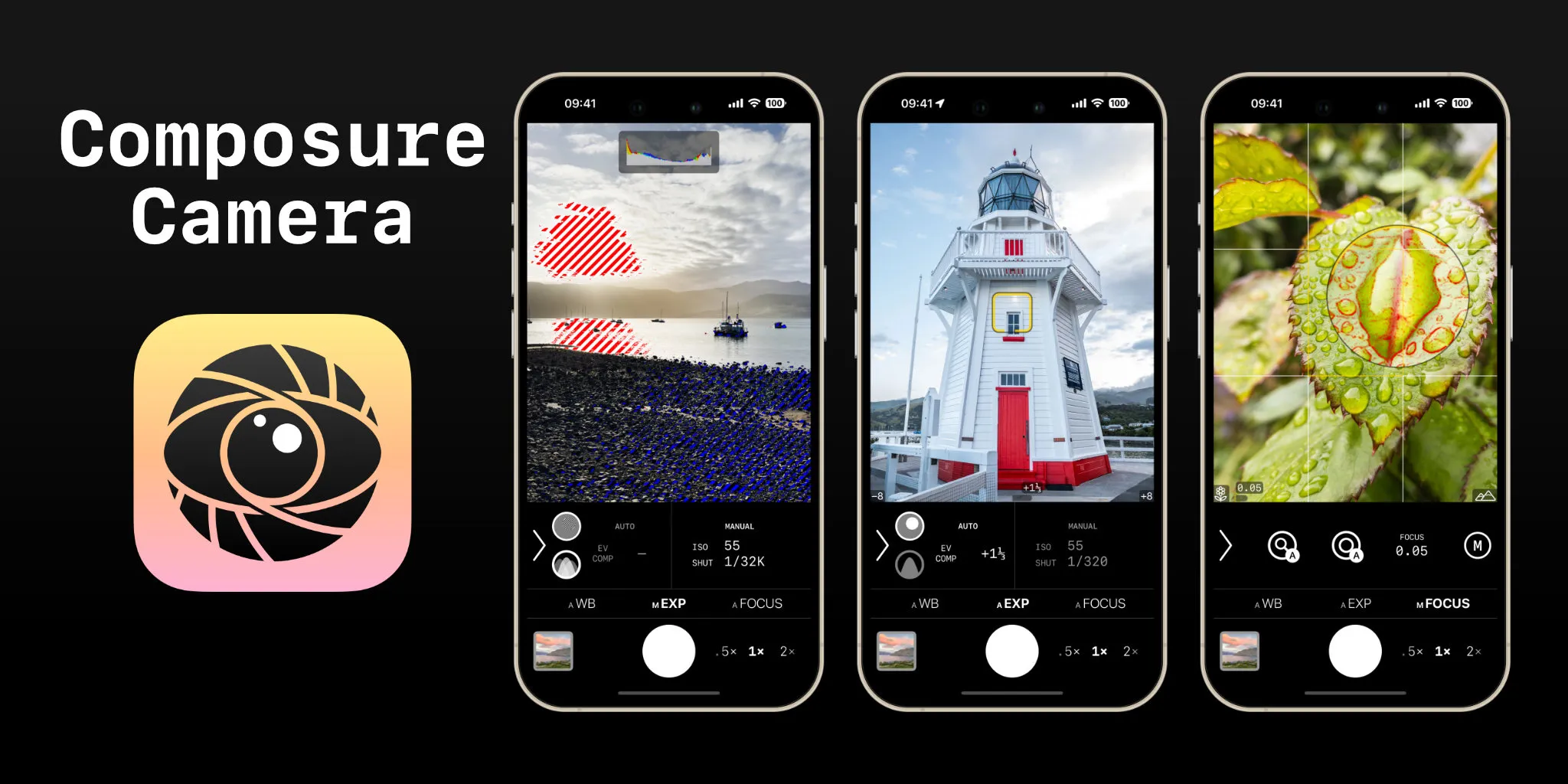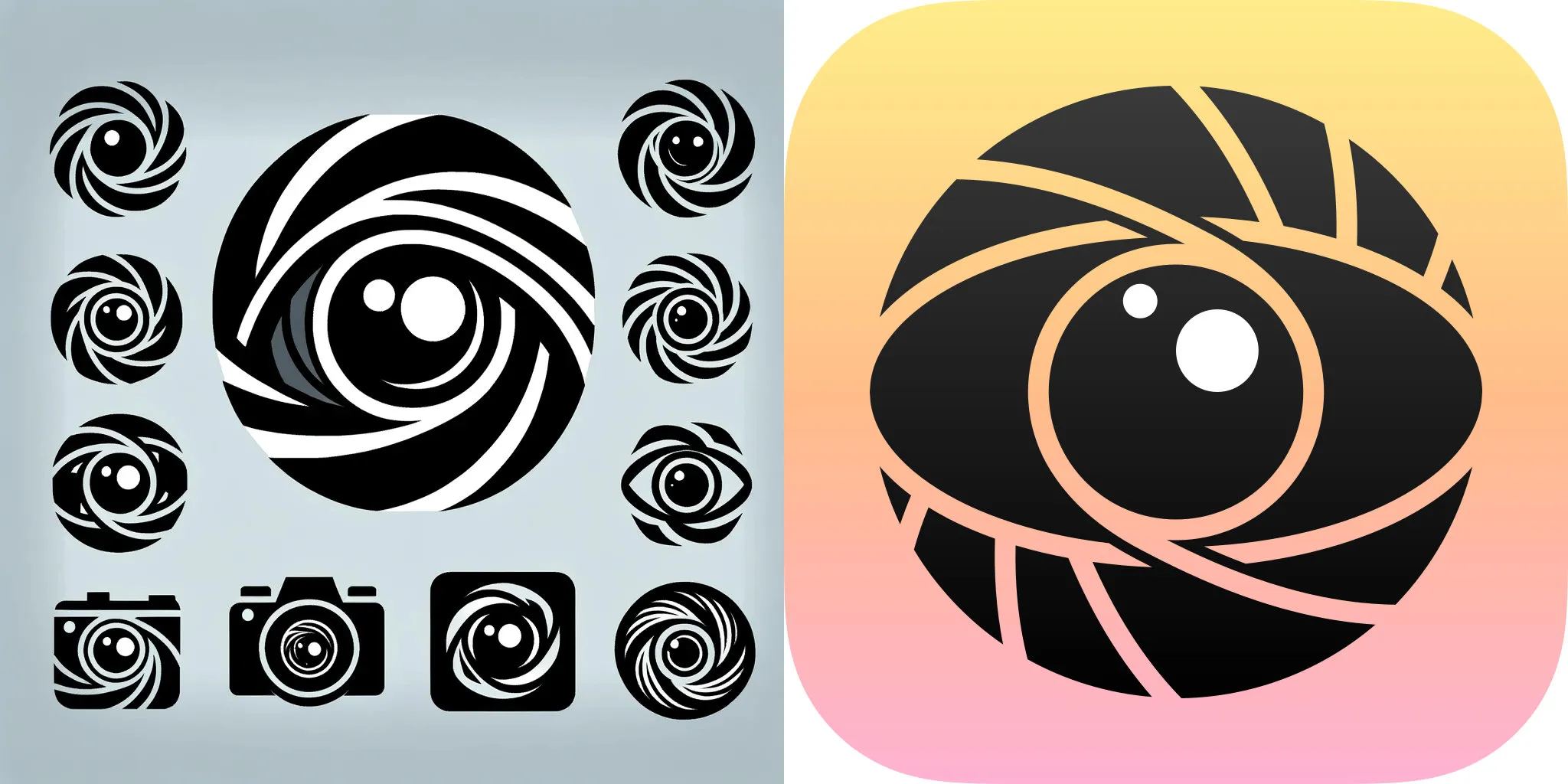This post is an edited and expanded version of my Mastodon thread
I made my first app - a RAW camera app! As of today, it is available on the App Store!

It’s completely free - my goal was to release an app by the end of the year, not to make money, so there’s no business model; no in-app purchase, no subscriptions, no ads. And despite a few App Store Review rejections - a crash on iPad and issues with the permissions prompt, I was able to make it just before my deadline.
Composure is written in Swift and a smattering of Metal for the live camera effects, and the UI written almost entirely with SwiftUI.
I started in mid-September (after a false start in March), and running cloc,
I’ve apparently written 21,000 lines of Swift and 400 lines of Metal in that time.
A ‘fun’ bug
During development, I’ve run into my fair share of bugs, there was one pretty memorable one were the UI would stop updating after the switching cameras.
My camera AVCapture code is in a Swift actor to ensure that all capture
device modifications are on a single thread. I did this after turning on full
concurrency warnings in preparation for Swift 6, and it took three attempts
before I was able to refactor it properly.
The app uses iOS 17’s @Observable which tracks properties that are read by
SwiftUI views, which schedules a view update when any of the accessed properties
are modified. When this occurs for any of the camera input properties (such as
exposure compensation or focus position), the camera view updates the capture device.
However, since actor accesses are all async, it was possible for the view to
re-render before the Task completed. The camera needs to be put in an ‘locked’
state before I can change its properties like exposure. When switching to a
different lens, this isn’t possible - it has to wait.
So, the following series of events could occur:
- The user would change lens, and immediately after, try change exposure.
- The camera would switch lens, taking a few hundred milliseconds.
Observable, tracking that change in exposure, would let the camera view update. In aTask, it would actually update the camera.- The view update finishes before the camera switch finishes. The view has not yet read the camera exposure
At this point, Observable believes the camera view does not have any
dependencies, and so it will never schedule the view to get re-rendered again:
you could try switch to manual exposure, change ISO, focus distance etc.
but the camera would no longer respond to these changes. And this could also
happen randomly - if the capture device update was slightly too slow even
just once, you would have to force quit and re-open the app.
Observable is great because it updates your views only when the specific properties you access change, but what I didn’t realize what that this ‘list’ of dependencies is re-calculated after every single view update.
It was only after I finally figured out that switching cameras and quickly changing a property like exposure would consistently cause the bug, that I was able to fix it. Before that, there were a few days of banging my head against the wall.
Icon
When it came to the icon, I didn’t have a single idea which I could use as a jumping-off point. However, I was able to use ChatGPT and Dalle-3 to generate a few dozen camera-themed icons, and was able to prompt it towards a direction I liked: a mix of a human eye and a camera iris.
I didn’t have any luck with refining it further, so I began drawing it as a vector in Inkscape, making tweaks to the design as I went. Inkscape on macOS is… not good. I had to use the Windows version and use screen sharing to draw it, but I am happy with the final outcome. Realistically, it is as good as I can make on my own without hiring a professional.
